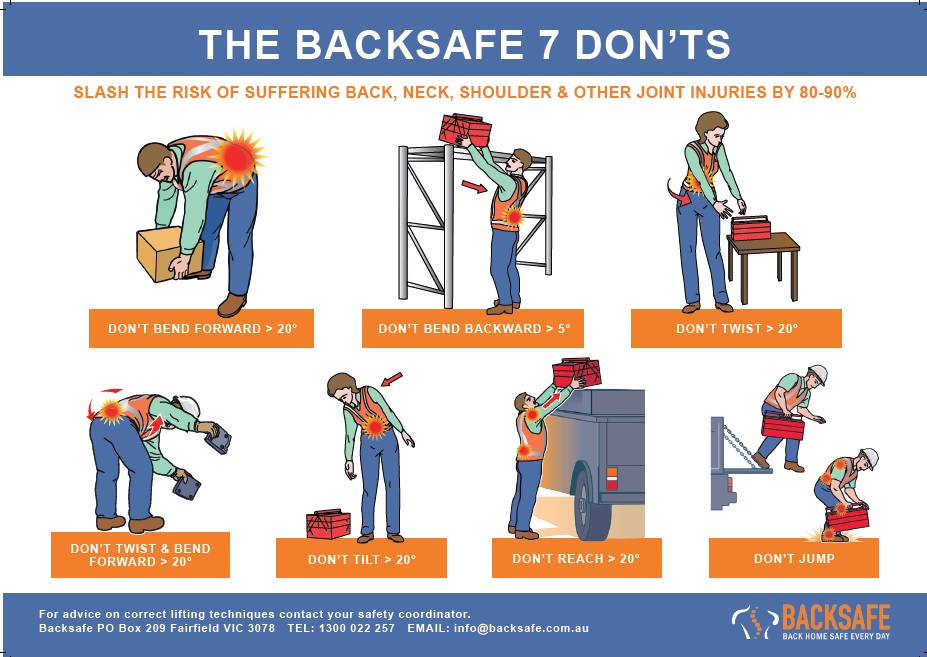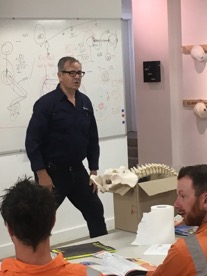We all want to achieve a happy and productive workplace. With that comes the right and obligation to provide a safe working environment where risks are identified and mitigated. You will no doubt appreciate that a single workplace accident can have a catastrophic effect on your team, the injured person, and their family. Not only does this compromise employee welfare, but also carries financial and legal ramifications for the organisation.
Prevention is Better than Cure.
Those are words we have all heard before, aren’t they? If you are interested in seeing what it looks like in the WHS sense then please read on:
1. Understand the risks to your business and people. Transparency, diligence, and openness are key. Not only should you spend time promoting Risk Identification, but also effective means of controlling hazards well into the future. These should be strategised and effectively managed. That means recording. Keeping a risk register is good, but keeping it live provides the true value.
2. Be careful what you import into your business, and where you allocate. We aren’t talking goods here, we are talking people. Your potentially greatest asset can also be your greatest risk if you do not undertake effective pre-employment recruitment, selection, and careful mentoring. Knowing the physical and mental demands of roles increases your ability to hire the right person for the job. Update that Job Dictionary!
3. Learn from unplanned events. Your duty of care includes investigating events in the workplace, and doing something about it to prevent reoccurrence. Pay special attention to the root cause(s) and assign your corrective actions to nip it in the bud. Think about how sustainable your corrective actions are, and how often they need to be revisited to ensure validity and effectiveness. Increase your internal capability, and use external providers judiciously.
4. Listen to your people. You hired the right people for a reason and they are invested in making the workplace safe. Staff engagement is heavily affected by your willingness to listen to suggestions, assess the impact, consult when it comes to change, and deliver on your promises.
5. Talk to your people. We put this after listening for a reason, but it is still a critical element and here’s why. If you keep your staff updated with the business, safety initiatives, projects, and other aspects that affect their welfare not only are they more likely to accept change but will also be invested in its success. That translates to shorter time for improvement opportunities from inception to implementation, and a safer workforce. It doesn’t need to be a town hall meeting, in fact – being present and accessible are core traits of many great leaders.
6. Set your team up for success. Cliché perhaps? True story hopefully. By providing your workforce with sufficient information, safety gear, tools of the trade, training, and support; they are best placed to deliver high performance to you. On the contrary; if you hold back on providing then you increase the chance of unplanned events while simultaneously decreasing employee engagement. Equipment needs to be up to standard, ideally “best practice”. Training and engagements provide maximum value when provided through edutainment.
7. Routine and Random Inspections. We aren’t saying “go incognito” or “undercover boss”. If your equipment, workplace, and procedural reviews are standard checklist based they become mechanical and what we refer to as “tick and flick”. The litmus test is when you ask yourself “how many gems do I get out of this process”. If you mix it up by getting fresh sets of eyes, and allowing an honest look at how your business is running – you are more likely to not only spot hazards, but increase motivation for innovation. This fosters a dynamic workplace that identifies and reduces risk.
8. Walk the talk. The leadership statement of practising what you preach. You know the standard you walk by is the standard you set. Bring your A-Game, and your team will too!
Chris Homsey is the CEO of Sustain Ability International and an expert in WHS. He leads a team of trainers and consultants who can help in all manner of issues to address WHS challenges including Injury Prevention. From Risk identification, WHS Strategies, Job Dictionaries, Audits or delivering training across a range of issues using our edutainment approach.




